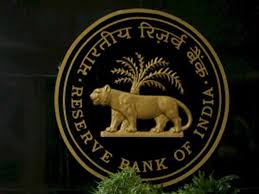
If you bought property worth more than Rs 50 lakh and did not deduct tax at source (TDS) or failed to deposit the amount with the income tax department on time, you may have to pay a penalty of up to Rs 1 lakh.
Several taxpayers recently received notices from the department for no t doing so. Anyone buying real estate worth more than Rs 50 lakh has to deduct 1% of the price of the property before paying the seller. That 1% TDS has to be deposited with the tax department using Form 26 QB.
“The income tax department recently matched the TDS data with the data they received from the property registrar for property transactions over `50 lakh. Wherever there was a discrepancy, either the buyers failed to deduct or deposit the TDS, a notice has been sent,” said Vaibhav Sankla, director, H&R Block.
While the rule has been in effect since June 1, 2013, many buyers are unaware or often confused about how to calculate the tax. TDS has to be calculated on the total sale price and not the amount exceeding Rs 50 lakh.
“Sometimes total sale price, which exceeds `50 lakh in aggregate, may be payable in instalments. The TDS in that case must be deducted from each instalment no matter how small the instalment is. Most people fail to do that,” said Archit Gupta, founder, ClearTax.in.
In case the payment is made in instalments, then TDS needs to be deducted at the time of making each payment. This TDS, deducted each time while paying the instalment, is to be deposited with the department by way of return cum challan (Form 26QB) within seven days of the following month of making the payment. Failing to do so can, apart from the dues and late filing interest, attract a penalty under Section 271H of up to Rs 1 lakh.
For those who have received a notice, the immediate corrective step to avoid paying a penalty is to pay the TDS along with the applicable interest and late filing fee.
The interest payable under Section 201 is 1% per month if tax wasn’t deducted and 1.5% in case this was done but not paid.
“This interest is calculated on the TDS amount from the date of payment, whether paid in lump sum or in instalments,” said Sankla. Take the example of a property purchased in January 2015 worth Rs 60 lakh where the first Rs 20 lakh was paid that month and the rest in June that year. For the first instalment of Rs 20 lakh, the interest will be applicable from January onwards, while that on the second payment will be from June 2015. There is also a late filing fee under Section 234E for delaying the interest payment of `200 per day, subject to the maximum of taxes due. There may be some leniency if the seller has already paid capital gains tax or claimed capital gains exemption (on the sale of property).
“The intent of the department is that there is no tax evasion. So, if the seller has already paid the taxes, the buyer can submit Form 26A certificate from a chartered accountant and request that penalty under Section 234E should not be levied,” said Gupta. Though this will save you from the late filing fee, the interest under Section 201 will still apply.
Buyers should also remember to issue Form 16B. “It is generated via TRACES and the seller may not be able to take tax credit for TDS deducted in case of non-filing or latefiling of Form 26QB,” said Gupta. Penalties remain the same for failing to do so.
Source:http://economictimes.indiatimes.com/articleshow/51901867.cms
 The Income Tax department has issued 2.10 crore refunds totalling over Rs 1.22 lakh crore in 2015-16, which saw 94 per cent the returns being filed online.
The Income Tax department has issued 2.10 crore refunds totalling over Rs 1.22 lakh crore in 2015-16, which saw 94 per cent the returns being filed online.





